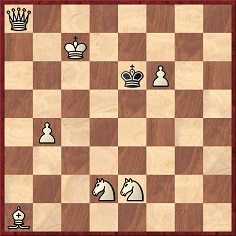
Edward Winter
***
Readers should brace themselves for a bumpy start:
M. Elsner – Frau Elsner
Klein-Wanzleben, 13 November 1885
Four Knights’ Game
1 e4 e5 2 Nf3 Nc6 3 Nc3 Nf6 4 Bb5 Ne7 5 O-O c6 6 Bc4 Ng4 7 h3 Nf6 8 Nxe5 d6 9 Bxf7 mate.
This game (warts and all) was published on page 356 of the November 1885 Deutsche Schachzeitung. Max Elsner had defeated his mother, and the score was submitted by Herr F. Elsner, who reported that his Söhnchen was aged 6¾, having been born on 10 February 1871. This left an arithmetical puzzle unresolved but, more importantly, a record or near-record had seemingly been set for the youngest player to have a game published.
Few nineteenth-century children – or, to use an anachronism, teenagers – found their chess production put on public view. In fact, the only familiar Wunderkinder seem to have been Morphy, Napier and Capablanca. In the problem field there was the mysterious Frank Norton (born in 1866) and Lilian Baird (1881-1977). Other so-called prodigies tended to receive fulsome write-ups without a chess move in sight. Jacob Billikopf (born circa 1882) of Richmond, Virginia was the subject of a feature, plus photograph, on page 335 of the November 1897 American Chess Magazine, which described him as ‘an apt and brilliant player, and who bids fair to develop into a phenomenal chess player’ and who might ‘some day rival his fellow-countryman, Chigorin’. Such words are cheap and risk-free. Much was made of the boy’s background (‘of Hebrew extraction’, ‘a child of the steppes’, ‘of good Slavic stock’), after which no space was left for any games or results.
An intrinsically riveting subject, child prodigies have been neglected by chess literature. Neither Great Games by Chess Prodigies by Fred Reinfeld nor Los niños prodigio del ajedrez by Pablo Morán strayed much beyond the Morphy-Capablanca-Reshevsky-Fischer rut, and any scholarly treatise of the future will need to consider prodigies of all types, including those whose initial promise was never fulfilled. There is much hunting to be done.
The above is part of an article that we contributed to the Chess Café in 1998. Other sections have since been expanded into separate feature articles: George H. Derrickson, James A. Leonard and John Drew Roberts. See too our articles on Rodrigo Flores, Aristide Gromer, Arturo Pomar, Birdie Reeve and Samuel Reshevsky, as well as the broader articles Chess Prodigies and Chess: Prodigies, Philosophy and Mathematics.
Information is still being sought on the problemist prodigy Frank Norton (born 1866). As a (very) modest start, here is a composition of his which was published on page 114 of the July 1878 American Chess Journal:

Mate in two
We can now provide some further information on Frank Norton, from the Scientific American Supplement of 19 January 1878, page 1708, beginning with a problem composed by him:
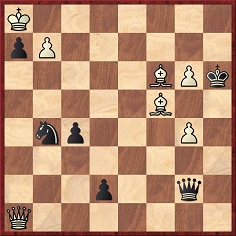
Mate in three
The same issue had the following game, played ‘about a year ago’ against his father:
D.P. Norton – Frank Norton
Des Moines (?), 1876 or 1877
(Remove White’s queen’s rook.)
1 e4 e5 2 Nf3 Nc6 3 Bc4 Nf6 4 Ng5 d5 5 exd5 Na5 6 Bb5+ c6 7 dxc6 bxc6 8 Be2 h6 9 Nf3 e4 10 Ne5 Qd4 11 f4 Bc5 12 Rf1 Qd6 13 c3 Nb7 14 b4 Bb6 15 Qa4 Nd8 16 Ba3 O-O 17 b5 Bc5 18 Bxc5 Qxc5 19 bxc6 Nxc6 20 Nxc6 Bd7 21 Bb5 Rfc8 22 Nd4 Bxb5 23 Nxb5 Qc6 24 Qa5 Rcb8 25 N5a3 Rb7 26 Ke2 Rab8 27 c4
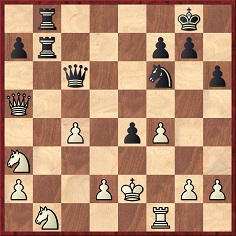
27…e3 28 Rf3 Rxb1 29 Nxb1 Qxc4+ 30 Kxe3 Ng4 mate.
(It may be mentioned in passing that a three-move problem by D.P. Norton was published on page 114 of the July 1878 American Chess Journal.)
Loyd’s Scientific American Supplement column also provided some biographical and anecdotal details:

‘Frank Norton, whose portrait graces our gallery, is now 11 years of age and has composed several excellent problems, and scored many games against our western players.
His father, Mr D.P. Norton, is a well-known player who has been residing many years in Des Moines; the family having recent migrated west, we find their advent thus chronicled in the Council Grove Kansas Democrat of 19 July:
“Last Monday a Mr Norton and family arrived at this place from Iowa and camped on the East side of the Neosho until they could procure a farm. Among the family was a ten-year-old boy that made some pretensions by playing chess. Tuesday morning he was sauntering up street, and in passing Dr Dill’s office espied the Dr’s chessmen and board. He walked in and wanted to play a game. The Dr replied that he did not play with babies. Then he thought he would see if the little chap knew anything about chess and told him to place the men in position. This was done all right and then the Dr played him a game, giving him the advantage of a queen. Ten-year-old won, and three or four even games were played, when the Dr found out the ‘baby’ could play but he couldn’t. He then accompanied the boy to Bradley & Nicholson’s office, where he ‘cleaned out’ everything at an even game. He played 11 games on Tuesday morning without the loss of one. He is a bright-looking little fellow, very quiet – hardly ever says a word while playing – and keeps his eyes on the game all the while. If he keeps on he will make a noted chessplayer at no distant day.”’
In the same column Loyd mentioned a name which takes us back to C.N. 1171 (see pages 52-53 of Chess Explorations), where we quoted a remark by A.C. Vázquez in La Estrategia Mexicana of October 1876:
‘F. Norton, at 11, composed problems and played fairly praiseworthy games, as did, at 12, Miss Blanca Fleischmann [sic], the celebrated and distinguished girl from Buffalo in the United States.’
From Loyd’s column:
‘Master [Simon] Fleischman resides in Buffalo and belongs to a very musical family, both Simon and a younger sister being professional musicians. They have both developed a remarkable aptitude for chess, and have published many excellent problems.’
The following specimen by Simon Fleischman was given on the same page:
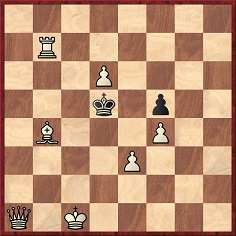
Mate in two
As with Frank Norton, we have no information on what became of the Fleischmans, and so far nothing has been found about the sister’s chess exploits.
(3402)
Rick Kennedy (Columbus, OH, USA) submits two games won by Frank Norton. The first, from pages 178-179 of the Dubuque Chess Journal, April 1875, was introduced as follows:
‘Chess By A Child
Near Des Moines, Iowa, is a frail boy eight years old that bids fair to become a wonderful chessplayer, if his mind is not destroyed by over-exertion at this tender age. Master Frank Norton commenced chess a few months ago, and is allowed to play but one game a day. The following is one of his late efforts.’
Frank Norton – D.P. Norton
Des Moines, 1875
(Remove Black’s queen.)
1 e4 e5 2 Nf3 Nc6 3 d4 exd4 4 Nxd4 Nd8 5 Bg5 f6 6 Bf4 d6 7 Qh5+ g6 8 Qb5+ c6 9 Qc4 Bd7 10 Qb3 c5 11 Nb5 Be6 12 Nc7+ Kf7 13 Bc4 Rb8 14 Bxe6+ Kg7 15 Ne8 mate.
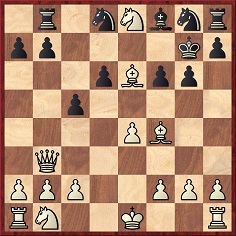
The game below (‘his first by correspondence’) was published in the Dubuque Chess Journal, March 1876, page 110:
Frank Norton – Alonzo Wheeler Jerome
Correspondence game
(Remove White’s queen’s rook and Black’s queen.)
1 e4 e6 2 d4 d6 3 Bc4 a6 4 f4 b5 5 Bb3 Be7 6 d5 e5 7 fxe5 dxe5 8 d6 Bxd6 9 Qd5 Nf6 10 Qxa8 Nfd7 11 Qd5 O-O 12 Be3 Nf6 13 Qa8 Bd7 14 Ba7 Nc6 15 Qb7 Nxe4 16 Bd5 Nd8 17 Qxa6 Nc5 18 Bxc5 Bxc5 19 Nf3 Bd6 20 O-O c6 21 Qb6 Kh8 22 Nc3 f6 23 Nxb5 Resigns.
(3406)
Olimpiu G. Urcan (Singapore) writes:
‘Jeremy Gaige’s Chess Personalia suggests that Frank Norton was born on 1 November 1866, possibly in England, with his date of death unknown. Page 1708 of the 19 January 1878 Scientific American Supplement noted that Frank Norton was 11 years old and had moved with his family from Des Moines, Iowa, to Council Grove, Kansas.
Following research into US census data, I believe Frank Norton to be the son of Dennis Norton (who appears to be the “D.P. Norton” mentioned in the Scientific American Supplement) and his wife Mary.
The 1880 US Census indicates that Dennis Norton was aged 54 (estimated date of birth 1826, in Ireland). He was listed as a grain dealer and was married to the 47-year-old Mary Norton (also of Irish origin). In their household that year, in Burlington, Des Moines, Iowa, were their seven children: John (23), Eddy (21), Mary (18), William (16), James (13), Frank (11) and Katie (8). According to the census data, Frank was born in 1869 in Iowa, which, if correct, makes him slightly younger than has been stated in several previous accounts.
His entry in the 1910 US Census reveals that he married Lillian Norton (often written “Lilian” or “Lilly” on several census forms and various other online collections of documents). Her father, Charles Miller, was French and her mother was a resident of Iowa. Their marriage is also confirmed by the Iowa Marriages, 1809-1992 database (available through FamilySearch.org), as having taken place in Burlington on 15 November 1904.
According to the 1910 Census, the couple had two sons: Dennis (four) and William (two), both born in Iowa. The family lived in Burlington, Ward 2, Des Moines. Frank Norton’s profession was given as “city auditor”. The 1920 US Census listed him as an “insurance agent” and, as was also the case in subsequent census lists, William was not mentioned.
Frank Norton’s 1915 entry in the Iowa State Census Collection (1836-1925) provided other details: his middle name began with C; he was educated for eight years at a grammar school and had three years of college education, his profession was given as “revenue inspector”, he was a Catholic, and he had served in the Spanish-American War (artillery).
The 1930 US Census listed Frank C. Norton’s profession as “insurance salesman”. According to Iowa Deaths and Burials, 1850-1990 at FamilySearch.org, Frank C. Norton died in Burlington on 19 October 1930.
The 1930 US Census also listed his son, Dennis Edward Norton, whose profession was “railroad shop apprentice”.’
(7078)
A significant prodigy in the realm of problem composition was Harry A. Boardman (1863-1935), and below are five of his productions from the 1870s:
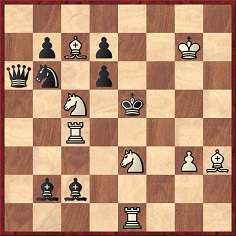
Mate in three
First prize, Detroit Free Press competition
Sources: Deutsche Schachzeitung, August-September 1876, page 283 and Scientific American Supplement, 25 August 1877, page 1374.
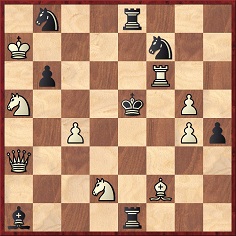
Mate in two
Source: Scientific American Supplement, 25 August 1877, page 1374.
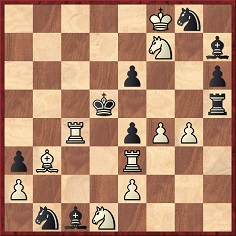
Mate in two
Source: Scientific American Supplement, 25 August 1877, page 1374.
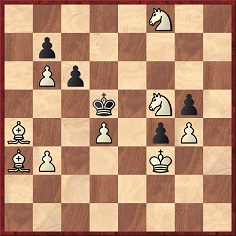
Mate in three
Source: American Chess Journal, March 1879, page 294.
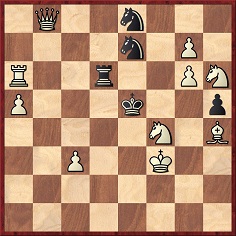
Mate in two
Source: American Chess Journal, April 1879, page 325.
In the above-mentioned column in the Scientific American Supplement Samuel Loyd referred to:
‘… Master Harry Boardman, of Melrose, Mass., a young problemist who has carried off some of the highest honors in our recent problem tournaments. A glance at his youthful features as depicted in our portrait gallery of this week shows him to be a mere lad just entering upon his teens, and surprisingly juvenile for one who has already composed over 100 scientific and elaborate chess problems which have gained him a worldwide reputation for skill and ingenuity.’
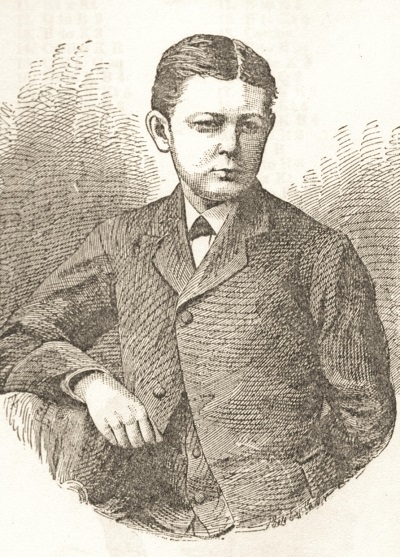
Harry A. Boardman
After his death in 1935, the BCM wrote (February 1936 issue, page 98):
‘H.A.B. was creating a great reputation 50 or 60 years ago in the old New York Clipper, quite a youth, and then he disappeared completely from chess. When he reappeared two or three years ago in Cincinnati, composing masterly problems with all the sparkle of his youth, it was difficult to credit that here was the same Boardman – long mourned as dead – really alive and active. Alas, there is no doubt this time that a good problemist has passed.’
(3410)
Below is the concluding section on nineteenth-century prodigies on page 140 of Kings, Commoners and Knaves:
John S. Hilbert draws our attention to this game, played by a seven-year-old against his father:
W.D. Brereton – Master Brereton
Pittsburg, 1898
Steinitz Gambit1 e4 e5 2 Nc3 Nc6 3 f4 exf4 4 d4 Qh4+ 5 Ke2 d6 6 Nf3 Bg4 7 Bxf4 O-O-O 8 h3 Bxf3+ 9 Kxf3 Qf6 10 Ke3 g5 11 Bg3 Bh6 12 Nd5 g4+ 13 Bf4 Bxf4+ 14 Nxf4 gxh3 15 gxh3 Re8 16 h4 Nge7 17 Bh3+ Kb8 18 Bg2 Rhg8 19 Ne2 Nf5+ 20 Kd2 Rxg2 21 Ke1 Qe5 22 White resigns.
Source: Philadelphia Public Ledger, 10 February 1898, which contained Kemeny’s annotations. He wrote that Black was probably ‘the youngest chess player living’.
Addition on 14 May 2022:
From John Townsend (Wokington, England):
‘Further to Olimpiu G. Urcan’s searches in the United States censuses, I also checked the 1870 US Federal Census (using the Familysearch website) and found the Norton family, including the one-year-old Francis P. Norton, living at Burlington (First Ward), county of Des Moines, state of Iowa. This snapshot of the family serves to corroborate Mr Urcan’s finding that Frank Norton was born in Iowa about 1869. Des Moines is also consistent with information contained in Loyd’s Scientific American Supplement which is also presented in your feature article.
The 1870 census entry shows Dennis Norton, 44, a grain dealer, born in Ireland, Mary, wife, 38, “keeping house”, born Ireland, with children: John J., 13, at school, born Iowa, Edward, 11, at school, born Iowa, Mary B., 8, at school, born Iowa, William D., 6, at home, born Iowa, James B., 4, born Iowa, Francis P., 1, born Iowa, and Maggie, 17, at home, born Illinois. The stated birth place of this last child, Maggie, suggests that the family had resided in Illinois in about 1853.’
To the Chess Notes main page.
To the Archives for other feature articles.
Copyright: Edward Winter. All rights reserved.